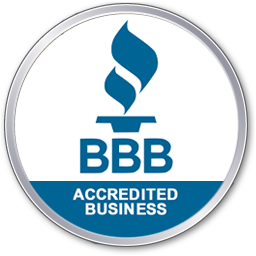Executive Summary
- Lead paint was a common feature found in homes before 1978, and it still exists in many homes built before then.
- The US instituted a law in 1978 that outlawed the use of lead paint in new homes, but it did not require that homes built previously had to have lead removed.
- Before purchasing an older home, lead testing is a good idea to identify the presence of lead because of its potential health risks.
- The best strategy for addressing lead contamination is to trust the experts for professional testing and removal, as they have the expertise and equipment to ensure a successful outcome.
Older homes come with an unmistakable charm, but before you commit to buying an older home, it’s important to do some extra research. Before 1978, many homes contained lead-based paint until it was outlawed due to health risks, so houses built before then may still have lead today.
Fortunately, professional lead testing can help you identify the risk of lead in your home or before you purchase so that you can take the right course of action. This guide will highlight the importance of lead testing in older homes, what options you should consider, and how you can address the remediation process.
What Is Legacy Lead Contamination?
Lead is a toxic substance that can cause both short-term and long-term health problems. Historically, lead was a common component of paint. Before manufacturers and lawmakers realized the dangers of lead paint, it was added to paint to speed up the drying process, increase durability, and resist moisture.
Once the dangers of lead became apparent, the United States passed a law in 1978 that banned the use of lead paint in residential buildings nationwide. Although this ban prevented newly built homes from using lead paint, it didn’t require removing the substances from already-built homes.
According to the Environmental Protection Agency (EPA), 87% of homes built before 1940 and 34% of homes built between 1960 and 1978 have some form of lead-based paint. Because of these numbers, the EPA recommends assuming that homes built before 1978 contain lead or consulting a certified lead-testing professional.
The Importance of Lead Testing
Lead testing is important to protect the health of everyone in your home. Lead exposure can lead to several harmful effects, especially in young children. Some of the symptoms of lead poisoning include:
- Developmental delays
- Learning disabilities
- Fatigue
- Abdominal pain
- Vomiting
- Seizures
Lead exposure is more dangerous for children, but that doesn’t mean that adults shouldn’t worry about lead. Anyone can experience side effects if they are exposed to the toxic substance.
Although most commonly used in paint, lead can find its way into several areas of the home, making testing more critical. Lead pipes are another common concern in older homes that homeowners should be aware of. Even chips or dust from lead paint can then find their way into the surrounding environment, including the soil.
When buying an older home, lead testing should be a priority. Sellers are legally required to disclose if lead is present in a home, but only if they are aware of the issue. Since many sellers are not aware of the presence of lead, residential lead testing helps make sure you are covered against the risks of exposure.
How Does Lead Testing Work?
Lead testing works by collecting a sample from the home and determining if it contains lead. Testing works differently depending on the area of the home you are testing. The different forms of lead testing include:
- Lead paint inspection – Lead paint is the most common hazard in older homes. Lead paint inspection involves a professional carefully assessing the paint for signs of lead. Swab tests, paint chip analysis, and x-ray testing are the most reliable methods for testing lead paint.
- Soil testing – In older homes, lead contamination of the soil is possible as contaminants can leach into the soil from lead paint in older homes or leaded gasoline runoff from nearby roadways. Soil testing requires taking a sample and sending it to a lab for analysis.
- Water testing – Water can be contaminated with lead from the corrosion of old pipes. Water testing involves taking a sample and sending it to a lab to measure the amount of lead present.
Interpreting Lead Testing Results
Testing for lead is one thing, but knowing when test results indicate that you should take action matters just as much. The EPA emphasizes that there is no safe level of lead exposure, so any amount of lead may require action.
Paint is considered lead-based when the amount of lead in a given sample is more than 0.5%, or 5,000 parts per million lead based on the weight. For accurate results, it’s important that the test is conducted properly and reaches all layers of a surface.
Interpreting the results of a lead test can be difficult or ambiguous for those who are not experts. Choosing a professional lead testing service will ensure that the lead results will be interpreted properly and accurately so that you can take the correct course of action.
Protect Your Home Against Lead
Professional lead testing in older homes is the best way to avoid the risk of exposure and maintain peace of mind. Our certified experts here at Alpha Environmental can help.
Types of Lead Testing Methods
Just as there are different ways that lead can pose a risk in your home, there are multiple options for testing for lead in your home. The different types of lead testing include:
Home testing kits – DIY home testing kits often use swabs to gather a sample from a surface and determine whether lead is present by using a chemical that changes color when it reacts with lead. These tests are a popular option, but they may only detect lead in high amounts and at a surface level.
X-ray fluorescence (XRF) analyzers – These professional tests can determine whether lead is present by measuring the sample’s chemistry through fluorescent X-rays to read an energy signature. This option is non-invasive and doesn’t require disturbing the surface, functioning like a radar gun.
Sampling – Depending on where you are concerned about the risk of lead presence, sampling can determine the presence of lead particles in dust, water, paint, or soil. A professional will collect a sample of the material and send it to a laboratory for analysis.
Lead Remediation and Mitigation Strategies
A fresh coat of paint is not enough to mitigate the risk of old lead-based paint. Whether it’s lead paint removal or soil remediation, removing and mitigating the risks of lead should be a controlled process.
There are two types of lead abatement strategies for reducing the risks of exposure:
- Encapsulation – A substance called an encapsulant can be painted over lead-contaminated surfaces, which will help prevent the spread of any lead paint particles or chips. Encapsulation is considered a temporary fix compared to other options, but it does effectively minimize the risk of exposure.
- Removal – This process entails removing lead-based paint from a surface or removing the surface from the home entirely. However, whether removal is the best choice depends on the level of risk. In some instances, if there is minimal risk of spreading lead chips or dust, then encapsulation or abatement may be the preferred method for saving time and money without disturbing the current paint.
How To Prevent Lead Exposure in Your Home
The best first step to prevent lead exposure in your home is to test for lead. Lead testing will indicate whether the hazard is present in your home and whether remediation is necessary. In older homes, you should have professionals perform lead paint testing, soil testing, and water testing so that you do not have to risk exposure yourself.
Beyond testing, you can take additional measures to minimize the spread of lead throughout your home. Some of the most common risks of exposure at home are lead particles and dust, so taking steps to contain and clean dust can go a long way.
Some ways to prevent lead exposure in your home include:
- Using a HEPA-filtered vacuum cleaner
- Washing children’s toys regularly
- Avoid handling paint without professional help
- Removing your shoes before entering your home
- Using a damp cloth to wipe surfaces and avoid spreading dust
- Using a wet mop to clean floors
Future-Proofing Older Homes
The best way to alleviate the risk of lead paint in old homes is to stay vigilant and protect your home for the future. Ongoing lead monitoring in older properties will help you catch the issue early and reduce the risks of exposure.
Although it’s best practice to test for lead when moving into an older home, periodic lead testing is also a good idea, as lead paint can become exposed over time due to paint chipping or wear. If you detect lead at any point, encapsulation or removal can help keep your family safe from exposure in the future.
Why You Should Consult with a Professional for Lead Testing
If you are buying an older home or suspect that lead may be present in your home, you should consult a professional service for reliable lead testing. DIY testing is an option, but professional testing is more reliable.
DIY testing kits can produce false negatives, meaning they provide a negative result even if lead is present. These kits can also only detect lead at a surface level. Not to mention, they create the risk of exposure for the person testing.
On the other hand, professional testing equipment is calibrated properly and can detect more in-depth presence of lead. Plus, if testing reveals that lead is present in your home, the professionals can immediately get to work on remediation or removal, as they have the proper experience to do so.
On top of their expertise and equipment, there are several reasons to trust the professionals:
- They have experience in removing lead safely and effectively
- They have the safety equipment necessary to protect themselves from exposure
- They will contain the lead to prevent spreading it throughout the home
- They use careful testing and mitigation procedures to ensure they remove all lead
Maintain Peace of Mind with Reliable Lead Removal
Lead exposure comes with significant health risks, and since many older homes contain lead paint, lead testing is the best practice. Lead can be present in paint, soil, water, and even in the form of dust, so consider testing each of these areas. Trusting the professionals with lead testing, remediation, and removal will ensure accurate and reliable results, ensuring the safety of your whole household.
You can rely on Alpha Environmental for effective residential lead testing here in Portland. Our team is certified and experienced in multiple types of lead testing, from lead paint inspection to soil testing. If lead is present, we will take lead-based paint removal or remediation seriously, using our 21+ years of experience in preventing the spread of the substance in your home.
Contact us today at Alpha Environmental to learn more about lead testing and lead remediation services.




